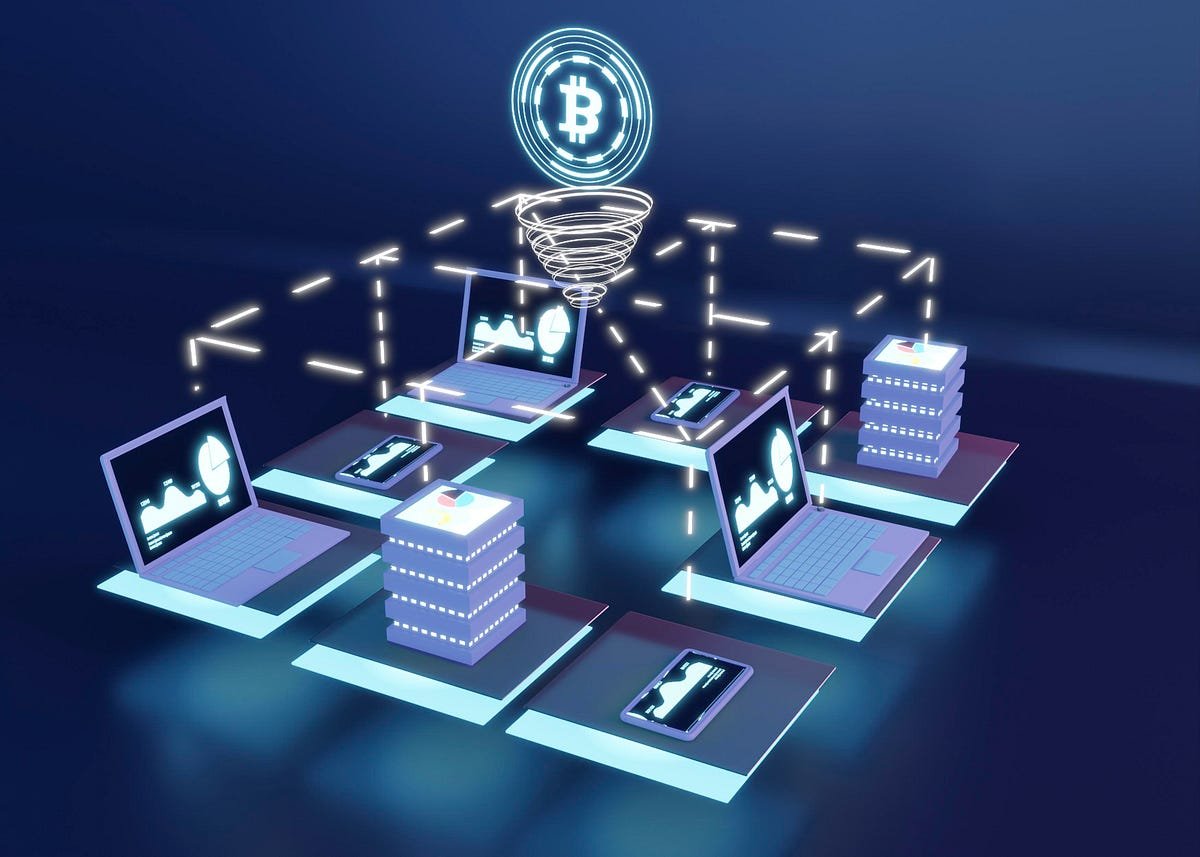The world’s largest financial institutions are no Blockchain based digital pdf from the sidelines. They’re running pilots, forming consortia, and building real products that bring blockchain-based digital money into mainstream finance. What started as an experiment around cryptocurrencies has evolved into a serious push for tokenized deposits, wholesale CBDCs, and blockchain settlement networks that could cut costs, reduce risk, and enable new revenue. In other words, the question is no longer whether distributed ledger technology belongs in banking—it’s how fast it can scale safely.
This article explains why major banks are exploring blockchain-based digital money, how it works, what business problems it solves, and what hurdles remain. We’ll unpack key models—from permissioned blockchains and stablecoins to central bank digital currencies (CBDCs)—and examine the impacts on payments, capital markets, and compliance. You’ll learn the difference between retail and wholesale use cases, the role of smart contracts and atomic settlement, and the emerging regulatory frameworks that make enterprise adoption possible. By the end, you’ll have a clear picture of where blockchain-based digital money fits in modern finance and what to watch as banks move from pilots to production.
Why banks care about blockchain-based digital money
Banks are in the business of trust, money movement, and risk management. Blockchain-based digital money speaks directly to all three. On permissioned ledgers, banks can create tokenized representations of cash that move as quickly as information, settle in near real time, and embed rules directly into the asset. This reduces operational friction and the cost of reconciliation across fragmented systems. It also opens the door to 24/7 settlement, programmable escrow and conditional payments, and streamlined post-trade processes in capital markets.
Banks also see competitive pressure from fintechs, payment giants, and crypto-native players that already offer instant global transfers and transparent transaction tracking. By deploying blockchain-based digital money, incumbents can offer similar speed and transparency while maintaining regulatory-grade controls. Equally important, the technology allows them to monetize their existing scale—connecting corporate customers across a shared ledger, issuing tokenized commercial bank money, and participating in interoperable networks that link banks, payment processors, and central banks.
What blockchain-based digital money actually means
The phrase “blockchain-based digital money” covers several models that look similar on the surface but differ in governance, risk, and reach.
Tokenized deposits
Tokenized deposits are digital tokens issued by a licensed bank on a permissioned blockchain, each representing a claim on that bank’s balance sheet. Because they are simply deposits in token form, they inherit the bank’s regulatory protections and compliance stack. For corporates, tokenized deposits can enable programmable cash management, automated treasury operations, and instant settlement within the bank’s network. For the bank, they’re a natural extension of core deposit products into a programmable world.
Stablecoins
Stablecoins are blockchain tokens pegged to fiat currency and usually backed by reserves. Some are issued by fintechs; increasingly, banks are considering regulated stablecoins to support cross-border payments and on-chain settlement for clients. Stablecoins can move across public or permissioned networks, but banks tend to favor permissioned stablecoins for compliance and control over counterparties.
Central bank digital currencies (CBDCs)
CBDCs come in two flavors: retail and wholesale. Retail CBDC targets consumers and small businesses as a digital form of cash, while wholesale CBDC is designed for interbank settlement and securities transactions. The wholesale model attracts banks because it can streamline real-time gross settlement (RTGS), enable atomic delivery-versus-payment, and support cross-border corridors with fewer intermediaries.
On-chain commercial bank money (CBM)
Some consortia are designing multi-bank networks where participants issue on-chain commercial bank money that is fungible across the network. A shared rulebook, interoperability standards, and common identity/KYC frameworks keep the network compliant while allowing instant transfers among member institutions and clients.
How blockchain improves today’s financial plumbing

Banks already move trillions daily. So what makes blockchain-based digital money compelling compared with existing rails like SWIFT, card networks, and domestic instant payment systems?
Instant settlement and lower counterparty risk
Traditional correspondent banking relies on multiple intermediaries, batch processing, and “good funds” checks that introduce settlement risk. With programmable settlement on shared ledgers, banks can transfer value and finality at the same time as messaging—reducing daylight overdrafts, collateral requirements, and the cost of failed trades. Atomic settlement ensures that either all parts of a transaction complete together or none do, which is especially powerful in securities settlement and FX.
Always-on operations
Most payment systems have cutoffs and downtime. Blockchain-based digital money operates 24/7/365, enabling intraday liquidity optimization and just-in-time payments for global supply chains. Treasurers can sweep funds programmatically, release escrow upon delivery signals, and align cash positions across time zones without waiting for next-day posting.
Shared source of truth
A permissioned blockchain gives participants a synchronized ledger with cryptographic auditability. Instead of reconciling records across dozens of internal systems and counterparties, banks and clients can rely on a single, tamper-evident history. This improves operational resilience, reduces disputes, and shortens the post-trade lifecycle from T+2 or T+1 toward T+0.
Embedded compliance
Contrary to myths, banks don’t need to compromise compliance to use blockchain. With on-chain identity, KYC/AML screening, travel rule compliance, and policy-based controls coded into smart contracts, payments can be both fast and compliant. Programmable privacy—using permissioned access, zero-knowledge proofs, or selective disclosure—ensures that regulators and auditors can see what they need without exposing proprietary data to all participants.
Core use cases banks are piloting first
High-value payments and interbank settlement
Banks are testing blockchain-based digital money for high-value transfers and interbank obligations. Here, the benefits of instant finality and reduced reconciliation overhead are largest. Liquidity can be managed more efficiently when settlements are programmable and synchronized across counterparties.
Tokenized assets and delivery-versus-payment (DvP)
Securities markets are migrating toward tokenized treasury bills, commercial paper, and repo agreements. When the asset and the cash both live on-chain, DvP can be atomic, eliminating settlement risk and shortening collateral cycles. This is especially valuable for repo, where collateral rehypothecation and intraday movement introduce complexity.
Corporate treasury and cash management
Large corporates juggling dozens of banking partners can use blockchain-based digital money to standardize settlement workflows, automate escrow, and implement smart contract-based payables and receivables. Imagine supplier invoices that auto-pay when delivery milestones are met, or dynamic discounting tied to verifiable logistics events.
Cross-border payments and FX
Correspondent banking can be slow and expensive. With a network of banks issuing tokenized deposits or interoperable stablecoins, cross-border transfers can clear in seconds with transparent fees. Smart contracts can embed FX conversion and compliance checks directly into the payment flow, while interoperability protocols connect different ledgers without forcing a single dominant standard.
Architecture choices: public vs permissioned, single vs multi-bank
Banks face design decisions that shape performance, compliance, and scalability.
Permissioned blockchains dominate early deployments
While public blockchains offer openness and global reach, banks prefer permissioned systems where participants are vetted and governance is clearly defined. Permissioned networks provide predictable fees, controlled data access, and easier regulatory supervision. They also support confidential transactions, a must for competitive and legal reasons.
Interoperability is a must-have, not a nice-to-have
No single ledger will rule them all. Banks are investing in interoperability frameworks that connect different blockchains, RTGS systems, and instant payment rails. The goal is to move value across networks without friction, preserving finality and compliance along the way. This is where standards for messaging, identity, and asset representation become critical.
Resilience, performance, and privacy
Enterprise-grade deployments require high throughput, low latency, and fault tolerance across multiple data centers and jurisdictions. Banks design for Byzantine fault tolerance, implement HSM-backed key management, and enforce strong access control. For privacy, techniques such as secure enclaves, channel-based visibility, and zero-knowledge proofs limit data exposure while enabling regulatory audit.
Regulatory landscape: clarity is coming—slowly
For banks, regulation is not a box to tick; it’s the blueprint. Supervisors want assurance that blockchain-based digital money preserves consumer protection, financial stability, and market integrity. That means capital treatment for tokenized exposures, liquidity coverage for on-chain deposits, and standards for custody, segregation, and operational risk.
Regulators are increasingly publishing guidance on stablecoin issuance, tokenized deposits, and DLT-based market infrastructures. Many central banks run wholesale CBDC pilots with commercial banks to test cross-border corridors, liquidity management, and integration with RTGS. While global harmonization is far from complete, the trajectory points toward risk-based rules that focus on reserves, redemption rights, and operational resilience rather than the technology label alone.
Business case: where value accrues
Cost takeout and capital efficiency
Banks can reduce back-office reconciliation, lower failed settlement costs, and free up collateral through T+0 finality. Even small percentage improvements translate into material savings at scale. Faster settlement also compresses counterparty exposures, improving risk-weighted asset profiles and liquidity ratios.
New products and fees
Programmable money opens new fee lines: conditional payments, workflow-based treasury services, escrow-as-a-service, and on-chain custody. In capital markets, banks can offer tokenization services for issuers and manage on-chain corporate actions—dividends, coupon payments, and voting—more efficiently.
Stickier client relationships
A bank that provides a blockchain-native treasury and settlement platform becomes embedded in clients’ daily operations. APIs, dashboards, and analytics around programmable cash create switching costs and deeper data-driven insights—enhancing wallet share while defending against fintech disintermediation.
Implementation roadmap: from POC to production
Start with clear problem statements
The most successful programs begin with one or two high-friction processes—say, intragroup transfers or repo settlement—and measure baseline costs and failure rates. Define specific KPIs: settlement time, cost per transaction, exception rates, and capital savings from reduced exposures. Blockchain-based digital money should be the means, not the end.
Governance and risk management from day one
Establish a cross-functional steering group spanning treasury, operations, risk, legal, compliance, and IT security. Decide on the ledger choice, consensus model, key management, and node operations. Build incident response and business continuity plans. Treat the ledger like a regulated market infrastructure, not a sandbox.
Build for integration, not isolation
Legacy systems aren’t going away. Wrap the blockchain stack with API gateways, message buses, and orchestration that synchronize with core banking, KYC systems, and payment gateways. Use oracles to bring off-chain data (shipment events, market prices, identity attestations) on-chain securely, and maintain a robust data lineage for audits.
Pilot with real customers
Internal pilots are necessary, but external pilots with select clients shake out edge cases: mismatched time zones, invoice changes, and exception handling. Define service-level agreements, chargeback rules, and liquidity buffers for 24/7 operation. Collect feedback on dashboards and controls so that treasurers can manage programmable flows confidently.
Risk factors and how banks mitigate them
Operational and cyber risk
New attack surfaces arise around private keys, smart contracts, and node infrastructure. Banks mitigate with HSMs, multi-party computation (MPC) for key custody, code audits, and staged rollouts with circuit breakers and kill switches for smart contracts. Regular tabletop exercises prepare teams for anomalies and regulatory notifications.
Legal finality and enforceability
A transaction may be final on-chain, but what does that mean legally across jurisdictions? Banks work with counsel to align contract law, property rights, and insolvency treatment with on-chain representations. Many projects rely on rulebooks that participants sign, binding on-chain actions to off-chain legal agreements.
Interoperability and vendor lock-in
Choosing one platform risks lock-in. Banks counter by adopting interoperability layers, open standards for token formats, and abstraction that lets business logic survive underneath platform changes. Multi-vendor strategies—running nodes across different cloud providers and hardware—reduce concentration risk.
Reputational considerations
Consumers and corporates may conflate bank-issued tokens with speculative crypto. Clear client education, transparent reserve disclosures (for stablecoin-like models), and conservative rollouts help maintain trust. Marketing emphasizes speed, safety, and compliance rather than hype.
Also Read: Ripple Custody Securing XRPL Tokenization for the Future
How blockchain-based digital money changes customer experience

For the end user, most of the magic happens behind the scenes. A treasurer will log into a portal that looks like any modern cash management dashboard. The difference is in speed and certainty. Payments clear instantly, balances update in real time, and conditional workflows execute without manual intervention. In markets, settlement windows shrink, freeing collateral and enabling intraday liquidity strategies. For SMEs, cross-border payments become as simple as sending an email, with predictable arrival times and transparent fees.
On the consumer side, retail CBDC pilots explore privacy-preserving designs where small payments retain cash-like anonymity while larger transfers trigger standard AML checks. Banks may act as distribution and service layers, providing familiar interfaces while central banks handle core issuance and settlement.
Measuring success: metrics that matter
Banks should track adoption and value using a balanced scorecard:
-
Operational metrics: settlement time, exception rates, reconciliation effort, uptime.
-
Financial metrics: cost per transaction, capital and collateral savings, new fee revenue.
-
Risk metrics: exposure duration, failed trade rates, cybersecurity incidents avoided.
-
Client metrics: NPS for treasury services, onboarding time, share of wallet.
Over time, successful programs migrate a meaningful percentage of high-value payments and post-trade workflows to blockchain-based digital money, with provable improvements in efficiency and risk.
What comes next
The next two to three years will likely bring scale-up of multi-bank tokenized deposit networks, early wholesale CBDC corridors between friendly jurisdictions, and broader adoption of tokenized securities where both cash and assets settle on-chain. Tooling will mature—policy engines, compliance oracles, and observability dashboards—making deployments easier to manage. Interoperability standards will harden as market leaders emerge, and regulators will continue to publish clarity around reserves, redemption rights, and operational resilience.
For banks, the strategic decision is clear: either shape the future rails of finance or be shaped by them. Embracing blockchain-based digital money is not about chasing a trend; it’s about modernizing the core capabilities that define banking—safeguarding value, moving it efficiently, and recording it with unimpeachable integrity.
Conclusion
Major banks are exploring Blockchain-Based Digital because it offers concrete, measurable benefits where legacy rails fall short: instant finality, 24/7 availability, stronger auditability, and programmable compliance. Whether through tokenized deposits, regulated stablecoins, or wholesale CBDCs, the direction of travel is toward interoperable, permissioned networks that blend the efficiency of blockchain with the safeguards of traditional finance. Success depends on disciplined governance, airtight security, thoughtful interoperability, and a relentless focus on real client problems. As pilots turn into production, blockchain-based digital money will move from a promising concept to the backbone of next-generation payments and settlements.
FAQs
Is blockchain-based digital money the same as cryptocurrency?
Not necessarily. Blockchain-based digital money in banking often refers to tokenized deposits or CBDCs issued by regulated institutions, with clear redemption rights and compliance controls. Cryptocurrencies can be decentralized assets without issuer backing. Banks favor permissioned designs that meet regulatory standards.
How do tokenized deposits differ from stablecoins?
Tokenized deposits are claims on a bank’s balance sheet, just like traditional deposits, but represented as tokens on a ledger. Stablecoins are typically issued by non-bank entities against reserves. Both can maintain a 1:1 peg to fiat, but tokenized deposits sit fully within bank regulation and supervision, while stablecoins depend on jurisdiction-specific rules.
What’s the biggest benefit for corporate treasurers?
Speed and certainty. With blockchain-based digital money, treasurers get instant settlement, real-time balance visibility, and programmable workflows for escrow, milestones, and just-in-time payments. This reduces operational overhead and improves working-capital efficiency across global operations.
Are privacy and compliance compatible on a shared ledger?
Yes. Permissioned blockchains enable role-based access, selective disclosure, and even zero-knowledge proofs to protect sensitive data. At the same time, KYC/AML checks, travel rule compliance, and audit trails can be built directly into smart contracts, satisfying regulatory requirements without sacrificing performance.
What are the main risks banks need to manage?
Key risks include cybersecurity around private keys and smart contracts, legal finality across jurisdictions, interoperability challenges, and potential reputational risk from public misconceptions. Banks mitigate these with HSMs and MPC for keys, rigorous audits, multi-vendor infrastructure, strong governance, and clear client education.


